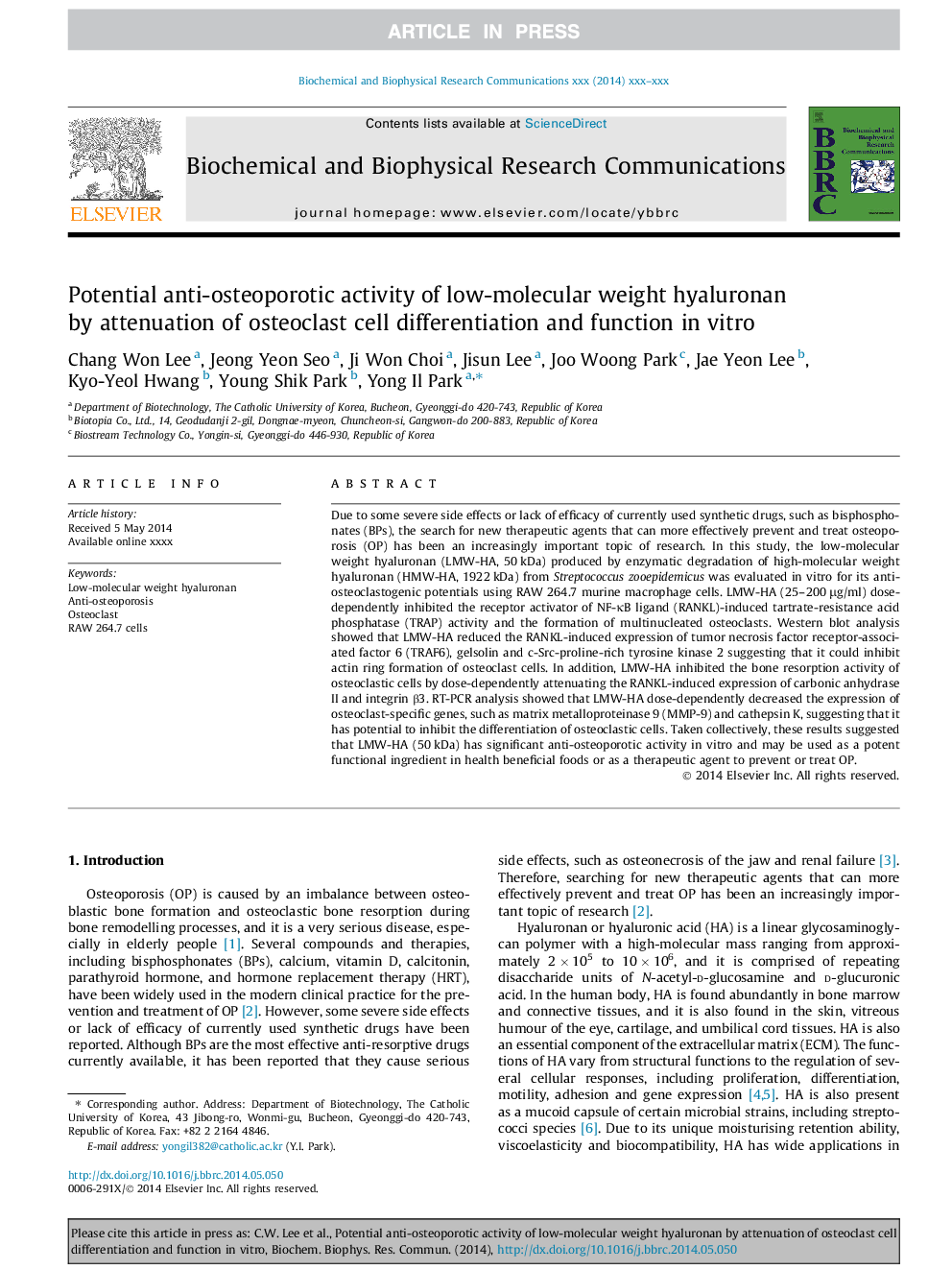| Article ID | Journal | Published Year | Pages | File Type |
|---|---|---|---|---|
| 10754829 | Biochemical and Biophysical Research Communications | 2014 | 6 Pages |
Abstract
Due to some severe side effects or lack of efficacy of currently used synthetic drugs, such as bisphosphonates (BPs), the search for new therapeutic agents that can more effectively prevent and treat osteoporosis (OP) has been an increasingly important topic of research. In this study, the low-molecular weight hyaluronan (LMW-HA, 50 kDa) produced by enzymatic degradation of high-molecular weight hyaluronan (HMW-HA, 1922 kDa) from Streptococcus zooepidemicus was evaluated in vitro for its anti-osteoclastogenic potentials using RAW 264.7 murine macrophage cells. LMW-HA (25-200 μg/ml) dose-dependently inhibited the receptor activator of NF-κB ligand (RANKL)-induced tartrate-resistance acid phosphatase (TRAP) activity and the formation of multinucleated osteoclasts. Western blot analysis showed that LMW-HA reduced the RANKL-induced expression of tumor necrosis factor receptor-associated factor 6 (TRAF6), gelsolin and c-Src-proline-rich tyrosine kinase 2 suggesting that it could inhibit actin ring formation of osteoclast cells. In addition, LMW-HA inhibited the bone resorption activity of osteoclastic cells by dose-dependently attenuating the RANKL-induced expression of carbonic anhydrase II and integrin β3. RT-PCR analysis showed that LMW-HA dose-dependently decreased the expression of osteoclast-specific genes, such as matrix metalloproteinase 9 (MMP-9) and cathepsin K, suggesting that it has potential to inhibit the differentiation of osteoclastic cells. Taken collectively, these results suggested that LMW-HA (50 kDa) has significant anti-osteoporotic activity in vitro and may be used as a potent functional ingredient in health beneficial foods or as a therapeutic agent to prevent or treat OP.
Related Topics
Life Sciences
Biochemistry, Genetics and Molecular Biology
Biochemistry
Authors
Chang Won Lee, Jeong Yeon Seo, Ji Won Choi, Jisun Lee, Joo Woong Park, Jae Yeon Lee, Kyo-Yeol Hwang, Young Shik Park, Yong Il Park,
